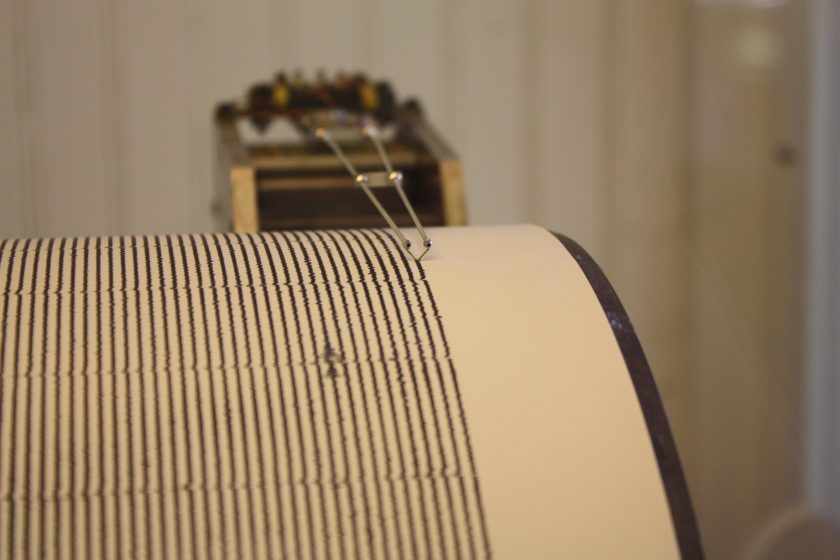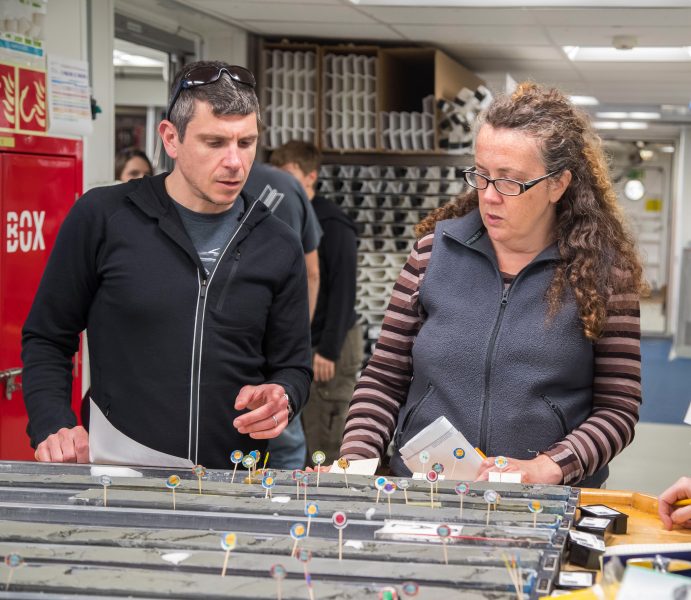Earthquake Scientists Have a New Tool in the Race to Find the Next Big One
February 16, 2023

An everyday quirk of physics could be an important missing piece in scientists’ efforts to predict the world’s most powerful earthquakes.
In a study published in the journal Science, researchers at The University of Texas at Austin discovered that a frictional phenomenon could be key to understanding when and how violently faults move. That’s because the phenomenon, which explains why it takes more effort to shove a heavy box from a standstill than it does to keep it moving, governs how quickly the fault surfaces bond together, or heal, after an earthquake. A fault that is slow to heal is more likely to move harmlessly, while one that heals quickly is more likely to stick until it breaks in a large, damaging earthquake.
The discovery could be key to understanding when, and how violently, faults move. That alone won’t allow scientists to predict when the next big one will strike — the forces behind large earthquakes are too complex — but it does give researchers a valuable new way to investigate the causes and potential for a large, damaging earthquake to happen, the authors said.
“The same physics and logic should apply to all different kinds of faults around the world,” said the study’s co-lead author Demian Saffer, director of the University of Texas Institute for Geophysics at the Jackson School of Geosciences. “With the right samples and field observations we can now start to make testable predictions about how big and how often large seismic slip events might occur on other major faults, like Cascadia in the Pacific Northwest.”
To make the discovery, researchers devised a test that combined rocks from a well-studied fault off the coast of New Zealand and a computer model, to successfully calculate that a harmless kind of “slow motion” earthquake would happen every few years because the clay-rich rocks within the fault are very slow to heal.

The rock samples the researchers tested were drilled from about half a mile under the seafloor in a fault in New Zealand. They squeezed the fault zone rocks in a hydraulic press and found that they were very slow to heal and slipped easily. When they plugged the rock data into a computer model of the fault, the result was a small, slow-motion tremor every two years, a near exact match with observations from the New Zealand fault.
The researchers think the clay-rich rocks, which are common at many large faults, could be regulating earthquakes by allowing plates to slip quietly past each other, which limits the buildup of stress. The discovery could be used to determine whether a fault is prone to slipping in large, damaging earthquakes, said study co-lead Srisharan Shreedharan, affiliate researcher at the University of Texas Institute for Geophysics and assistant professor at Utah State University.
“This doesn’t get us any closer to actually predicting earthquakes, but it does tell us whether a fault is likely to slip silently with no earthquakes, or have large ground-shaking earthquakes,” he said.
At Cascadia, there is little evidence of shallow, slow-motion tremors. That’s one of the reasons the Pacific Northwest Seismic Network wants to place sensors across key areas of the fault. The new study gives them the framework to do so, said network Director Harold Tobin.
“We want to zero in on the processes in the shallow part of the fault because that’s what governs the size of the tsunami,” said Tobin, who was not part of the study. “Fault healing doesn’t explain everything, but it does give us a window into the working of subduction zone faults that we didn’t have before.”
The research was funded by the University of Texas Institute for Geophysics, the International Ocean Discovery Program, and New Zealand’s GNS Science. The New Zealand rock samples were gathered during a 2018 scientific ocean drilling mission co-led by Saffer and Laura Wallace, a research scientist at University of Texas Institute for Geophysics and GNS Science in New Zealand. Coauthors included Wallace and Charles Williams, also at GNS Science, who collaborated on the study’s computer modeling.
For more information, contact: Anton Caputo, Jackson School of Geosciences, 210-602-2085; Constantino Panagopulos, University of Texas Institute for Geophysics, 512-574-7376.
